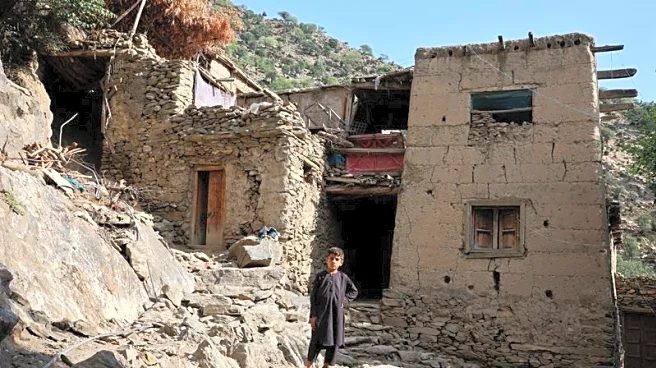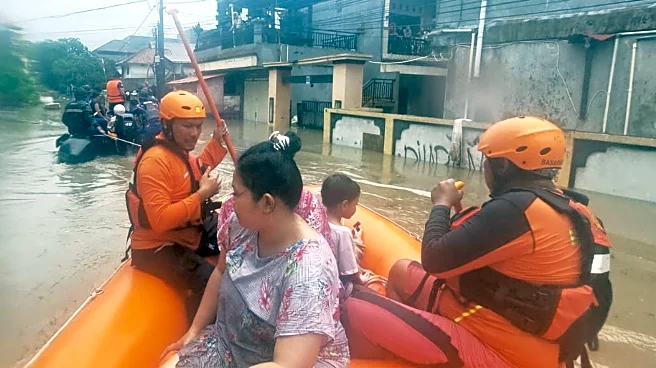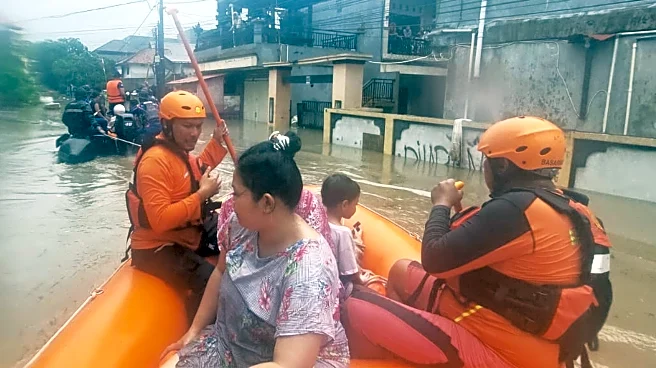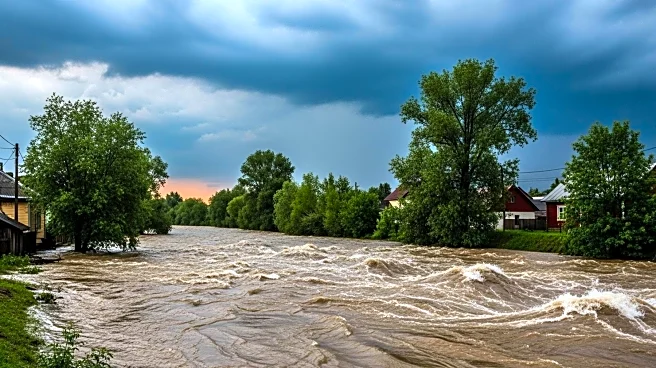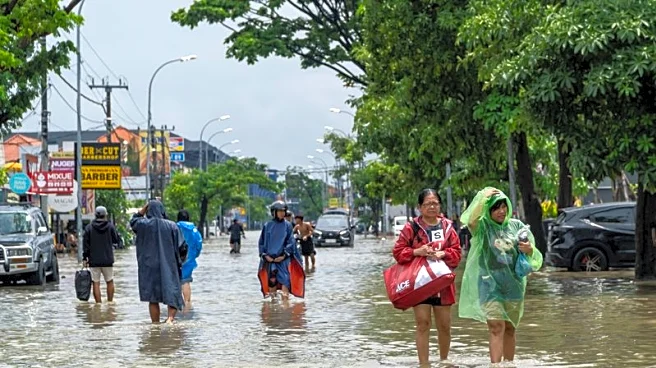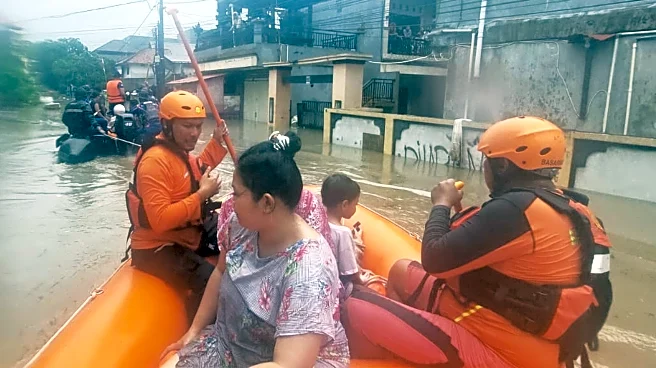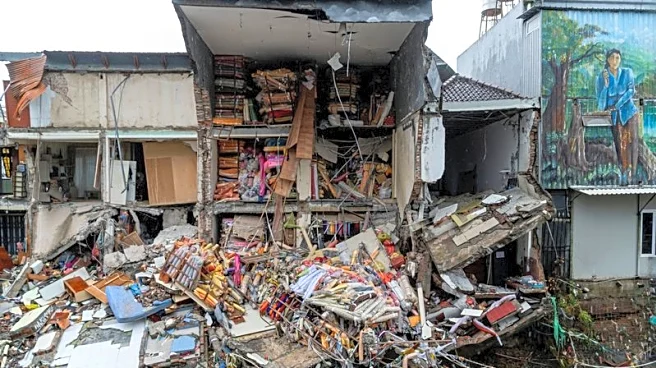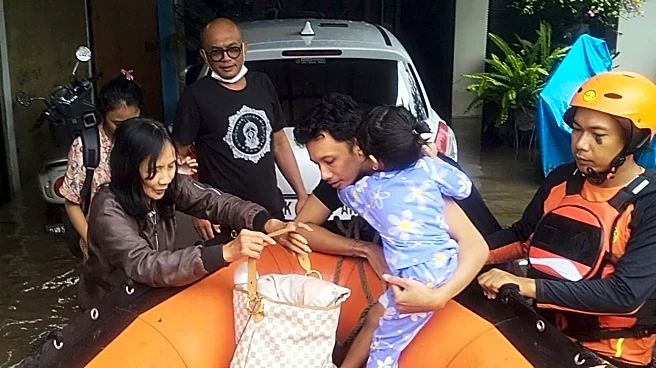What is the story about?
What's Happening?
Severe flooding has struck Bali, Indonesia, causing significant disruption to both local communities and the tourism industry. Torrential rains have led to rivers bursting their banks, flooding road tunnels, and inundating nine cities and districts on the island. The Bali Disaster Mitigation Agency reported that mudslides and rising rivers have affected at least 112 neighborhoods. The floods have resulted in the deaths of 15 people, with six individuals still missing. Authorities have cut electricity and water supplies, forcing hotels, restaurants, hospitals, and other public facilities to rely on generators. Bali Governor Wayan Koster stated that the disaster has caused material losses for traders and tourism businesses, with more than 800 people seeking refuge in temporary shelters. Videos on social media depict major roads submerged, leading to traffic gridlock.
Why It's Important?
The flooding in Bali highlights the vulnerability of tourist destinations to natural disasters, which can have significant economic impacts. Bali, a major tourist hub, relies heavily on tourism revenue, and disruptions such as these can deter visitors and affect local businesses. The loss of infrastructure and services, including electricity and water, poses challenges for both residents and tourists. The situation underscores the need for effective disaster preparedness and response strategies to mitigate the impact of such events. Additionally, the floods follow recent unrest in Indonesia, adding to the challenges faced by the government in maintaining stability and safety for residents and visitors alike.
What's Next?
Efforts are underway to locate the missing individuals and provide aid to those affected by the floods. The Bali government is likely to focus on restoring essential services and infrastructure to support both local communities and the tourism industry. There may be increased scrutiny on disaster preparedness measures and infrastructure resilience in the region. The recent unrest in Indonesia could also influence government actions and policies aimed at ensuring public safety and maintaining tourism as a viable economic sector.
Beyond the Headlines
The floods in Bali may prompt discussions on climate change and its role in exacerbating natural disasters. As heavy seasonal rains are common in Indonesia, there is a growing need to address environmental factors contributing to such events. The situation also raises questions about the balance between tourism development and environmental sustainability, as the island's infrastructure is tested by extreme weather conditions. Long-term strategies may be required to enhance resilience against future disasters and ensure the safety and well-being of both residents and tourists.
AI Generated Content
Do you find this article useful?


